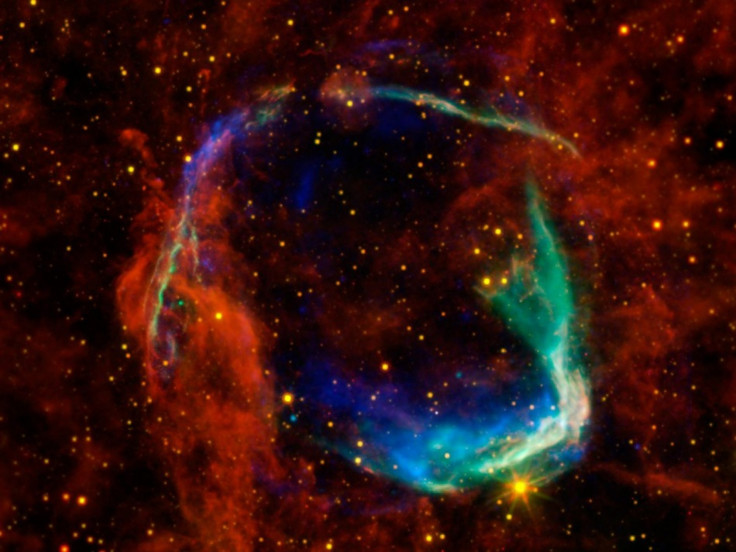NASA Telescope Solves 2,000 Year Old Supernova Mystery

Two NASA telescopes helped solved a 2,000-year-old mystery first seen by Chinese Astronomers in 185 A.D.
Then ancient sky watcher noticed what they described as a "guest star" that mysteriously appeared in the sky and hung around for about 8 months. By the 1960s, scientists figured out the visiting star was the first documented supernova. They named it RCW 86 and its remnants are located about 8,000 light-years away from Earth.
But even then a mystery still surrounded the cosmic explosion.
"This supernova remnant got really big, really fast," Brian J. Williams, an astronomer at North Carolina State University in Raleigh, said in a NASA press release. Williams is lead author of a new study detailing the findings online in the Astrophysical Journal. "It's two to three times bigger than we would expect for a supernova that was witnessed exploding nearly 2,000 years ago. Now, we've been able to finally pinpoint the cause."
The cause was an event known as a "Type la" supernova. A star much like out sun exploded and shrank to a dense white dwarf. Then the dwarf was thought to have siphoned off some more fuel from a nearby star and exploded again in another supernova.
"A white dwarf is like a smoking cinder from a burnt-out fire," Williams said. "If you pour gasoline on it, it will explode."
So the white dwarf carved out a hallow cavity around itself in the first explosion, then the debris was expelled unperturbed during the second "Type la" event. The free space explains with RCW 86 remnants were able to spread so quickly and why it is so large.
This is the first time a "Type la" event was shown to create an empty cavity around itself. Scientists previously thought that RCW 86 resulted from a core-collapse supernova, the most powerful type of stellar blast. In that type of explosion, the stars blow material away from themselves creating the hallow space around itself.
The discovery was made by the new infrared observation from NASA's Spitzer Space Telescope and Wide-field Infrared Survey Explorer (WISE).
"Modern astronomers unveiled one secret of a two-millennium-old cosmic mystery only to reveal another," Bill Danchi, Spitzer and WISE program scientist at NASA Headquarters in Washington, said. "Now, with multiple observatories extending our senses in space, we can fully appreciate the remarkable physics behind this star's death throes, yet still be as in awe of the cosmos as the ancient astronomers."
© Copyright IBTimes 2025. All rights reserved.





















